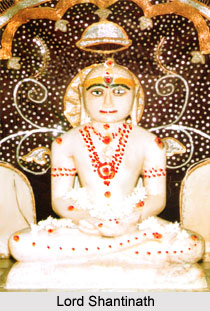 Shri Sivera Teerth located in Rajasthan is a Jain pilgrimage centre. The teerth kshetra is situated in the centre of the Sivera village. The temple is dedicated to Lord Shantinath, the sixteenth Jain Tirthankara.
Shri Sivera Teerth located in Rajasthan is a Jain pilgrimage centre. The teerth kshetra is situated in the centre of the Sivera village. The temple is dedicated to Lord Shantinath, the sixteenth Jain Tirthankara.
History of Shri Sivera Teerth
The history of Shri Sivera Teerth states that the teerth is very ancient. As per references earlier it was a rich and prosperous place and was resided by many people. Inscriptions on stones reveal that the teerth was formerly named as Siperak. According to the inscription carved in the temple, the idol was installed on the eighth day of the bright half of the month of Vaishakh in the year 1109 of the Vikram Samvat Era. This teerth, therefore, belongs to a period prior to the twelfth century. Since its construction the teerth has been repaired ans renovated several times. The idol of Lord Shantinath is believed to possess miraculous powers and is visited by thousands of Jains and non Jains from far off places. They come here to offer their prayers to the Lord and receive his blessings. It is believed that if prayed with all devotion the Lord fulfils the wishes of the pilgrims.
Temple of Shri Sivera Teerth
The temple of Shri Sivera Teerth houses the idol of Lord Shantinath. The temple has been beautifully decorated with intricate designs. These stand as unique example of ancient art and boast about the skills of the craftsmen. The walls and pillars of the temple are adorned with specimens of ancient art and paintings. The idol of the Lord is white n colour and is seated in a padmasana posture. The idol has been beautifully carved from a single stone and looks very appealing. The smiling face of the Lord looks very calm and serene.
The Temple of Sri Sivera Teerth organizes many annual gatherings and functions that are celebrated with much enthusiasm. Every year a fair is held on the fifteenth day of the bright half of the month of Kartak. There are provisions for dharamshalas or rest houses for the pilgrims that are well equipped with all modern facilities. There are also facilities for Upashrays, Ayambilshala and Jnanabhandar. The teerth being situated amidst beautiful natural surroundings attracts many pilgrims. The surrounding greenery and the beauty of the teerth mesmerize and fascinate the pilgrims. The calm and tranquil village environment makes it a perfect place for religious activities. The kshetra is well connected to road, rail and air. Taxi services and bus services are easily available here. The nearest railway station is located at Sirohi Road that is at distance of 8 kilometers.




















